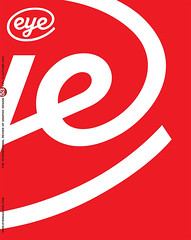Autumn 2004
Endangered species
Working Title: Piet Gerards, Graphic Designer
Ben van Melick. 010 Publishers, £31.50<br>Piet Gerards is a craftsman. You can’t fail to notice this from the moment you pick up his book, also designed by the self-taught Gerards. Working Title is beautifully made, feels nice to the touch (it’s covered in a soft uncoated ‘craft’ paper) – even the weight feels that it was meant to be. The contents displayed represent an enviable portfolio, spanning 30 years and representing an A-Z of typographic styles and treatments. Gerards understands the mechanics of a book, how to make it an object of desire, and also how it functions as a series of spaces within a space. Unfortunately for Gerards, this kind of intelligent, considered artistry has fallen out of favour with emerging graphic designers and design students who are blinded by technological trickery and the instant hit of surface effect, delivered by today’s post-MTV generation ‘graffiks’. Craftsmanship requires time, knowledge, an empathetic approach and an appreciation and understanding of content – qualities that abound in this valuable book.
Working Title displays Gerards’ work in chronological order. It starts in the 1970s, with the young artisan as a left-wing activist designing posters with simple tools: a letter punch, a typewriter, a silkscreen printing press, dry transfer type and rubber stamps. Moving to the 1980s, Gerards began designing and publishing literary books, with the lucid Modernist and contemporary approach that was to define his work. It is also the period he moved into art books and established the Signe gallery and arts centre. In the 1990s he moved on to architecture books. The final chapter is reserved for other work that doesn’t conveniently fit in with previous sections, and includes logos, annual reports, coins, calendars, postage stamps and websites.
The captions – in which the designer discusses his work – are the real treat, giving the book a personal touch. It allows an insight into the process and concept behind each project, an eye for and devotion to detail that underlines Gerards’ commitment to the craft: on one page he talks about ‘matt black foil on black cloth binding’; elsewhere he refers to ‘cloth spine and paper covered boards’; or he expounds his views on type, setting down his preference for ‘continuous reading typefaces in books on architecture’, rather than ‘trendy fonts’ such as Letter Gothic or Akzidenz Grotesk. His naming of, not only the fonts used, but also the designers, makes his commentary especially endearing: Eric Gill’s Joanna, Frank Blokland’s Documenta, Fred Smeijers’ Quadrat, or Gerard Unger’s Argo. This said, the English translation – which is summarised from the Dutch original and placed at the back of the book – left me feeling let down. The prose is awkward and lacks a sense of flow – quite unlike the work it is introducing. I was also disappointed that about 60 per cent of the text is not translated, and I wanted to know more about the designer and his work.
Before discovering this book I was completely unaware of Gerards. It’s an unfortunate reflection, perhaps, of the values that the design community celebrates today that a quiet, considered, subtle talent like Gerard can go unnoticed for so long. What this book represents is the work of an endangered species, a designer who truly understands the meaning of form and content. Granted, the qualities Gerards’ work displays aren’t fashionable in today’s design community, but current practitioners could do far worse than pick up a few lessons from his exemplary career.
Christopher Brawn, graphic designer, London
First published in Eye no. 53 vol. 14, 2004
Eye is the world’s most beautiful and collectable graphic design journal, published quarterly for professional designers, students and anyone interested in critical, informed writing about graphic design and visual culture. It is available from all good design bookshops and online at the Eye shop, where you can buy subscriptions, back issues and single copies of the latest issue. You can also browse visual samples of recent issues at Eye before You Buy.

